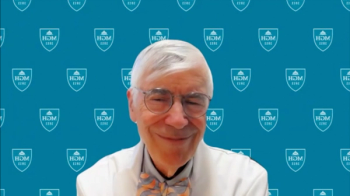
Migraine Prevalence May Be Associated With Spontaneous Coronary Artery Dissection
Patients with a history of migraine are more likely to develop spontaneous coronary artery dissection at a younger age, have depression, and post-SCAD chest pains compared with patients without a migraine history, according to the results of a recent study.
Patients with a history of migraine are more likely to develop spontaneous coronary artery dissection (SCAD) at a younger age, have depression, and post-SCAD chest pains compared with patients without a migraine history, according to the results of a recent study.
SCAD is a medical emergency that occurs from a tear in the coronary artery and impairs blood flow and consequently causes cardiac arrest and/or myocardial infarction. Unlike other cardiac events, SCAD occurs spontaneously, frequently in people with no risk factors for heart disease, such as high blood pressure or diabetes.
Although many of the classic atherosclerotic risk factors do not apply, recent findings from studies suspect that migraine may be associated with SCAD. Migraines are linked to an increased risk of cardiovascular events and all increase in patients with other vascular abnormalities. During the study, patients with a history of both SCAD and migraine were compared with patients who only had SCAD to assess prevalence and differences in clinical factors and characteristics between the two groups.
Of the 585 patients with SCAD in this study, the lifetime prevalence of migraine was 40%, with a 1-year prevalence of 26%. Prevalence of migraine among patients with SCAD was significantly higher compared with patients with only SCAD (40% vs 24%; P < .0001). Patients with SCAD and migraine were also more likely to be female and younger at the time of dissection compared with patients without migraine.
Among the patients who were screened for extracoronoary vascular abnormalities (EVAs), 58% had fibromuscular dysplasia (FMD), 23% had non-FMD EVAs, and 65% had any EVAs. In the patients with SCAD and migraine group, non-FMD EVAs, such as aneurysms, pseudoaneurysms and dissections, were more common (28% vs 18%, P = .025). Furthermore, depression (27% vs 17%; P = .0053) and chest pain during the month following SCAD (50% vs 39%; P = .009) were both higher in patients with a migraine history compared with those without. Differences in 5-year SCAD incidence rates, however, were similar between patients with or without a history of migraine (15% vs 19%; P = .39).
From these findings, investigators concluded that patients with SCAD and migraine have unique characteristics that separate them from those without migraine. Because many patients with SCAD have a history of migraine, further research should be done to identify whether migraines lead to an increased risk of vascular injury predisposing to SCAD.
Reference:
Kok SN, Hayes SN, Cutrer M, et al. Prevalence and clinical factors of migraine in patients with spontaneous coronary artery dissection. J Am Heart Assoc. 2018;7(24):e010140. doi: 10.1161/JAHA.118.010140.
Newsletter
Stay ahead of policy, cost, and value—subscribe to AJMC for expert insights at the intersection of clinical care and health economics.





























































